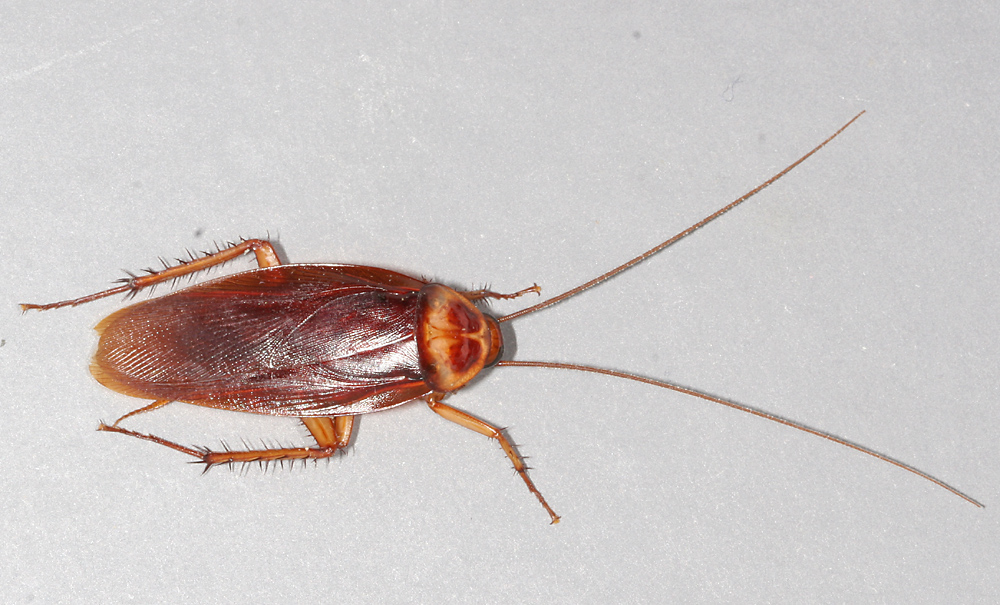Experts Warn of the Rapid Spread of the American Cockroach in the Canary Islands
Experts are raising alarms about the increasing prevalence of the American cockroach (Periplaneta americana) across the Canary Islands, highlighting its larger size, resilience, and potential hazards compared to typical species found in Spanish households. This invasive species poses not only a nuisance but also significant health risks, making it a pressing concern for residents and authorities alike.

Widespread Invasion Across Spain
A recent report by the pest control company Anticimex reveals that this invasive insect has been detected in 88% of Spain’s provinces, including the Canary Islands. Only a handful of provinces, such as Álava, Ávila, Segovia, Soria, Teruel, and Zamora, remain free from confirmed sightings. The rapid spread of the American cockroach is alarming, as it indicates a significant shift in the pest landscape of the country.
The study, conducted by experts Carlos Pradera and Erik Rodríguez, is the first to provide a comprehensive map detailing the species’ presence and expansion throughout the country. It indicates that the American cockroach has firmly established itself not only in the Canary Islands but also in the Balearic Islands and along much of the Mediterranean coast. This widespread presence raises concerns about the ecological impact and the potential for increased pest-related issues in urban areas.
Historical Context of the American Cockroach
The American cockroach was initially introduced to Spain in the 18th century. However, its spread has accelerated significantly over the past 50 years. Once limited to ports and coastal cities, it has now been identified in central urban areas, including the capital, Madrid. This historical context underscores the adaptability and resilience of the species, which has thrived in various environments across the country.
This species thrives in warm, humid environments, making the Canary Islands particularly susceptible to its proliferation. Experts suggest that climate change is exacerbating the situation by extending breeding seasons and enhancing reproduction rates throughout the year. As temperatures rise and weather patterns shift, the conditions become increasingly favorable for the American cockroach to flourish.
Challenges in Pest Control
Cockroaches have become Spain’s most prevalent urban pest, accounting for 42% of all pest control interventions in 2024, surpassing rodents, which account for 25%. Between January and May 2025, infestations increased by 20% compared to the same period in the previous year. This surge in cockroach populations highlights the urgent need for effective pest management strategies to combat their spread.
The American cockroach can grow up to 5 centimeters in length and has a lifespan of nearly two years, with some individuals living up to 706 days. Its rapid movement and ability to thrive in unsanitary conditions make it one of the most challenging species to eradicate. The combination of its size, longevity, and adaptability contributes to its dominance as a pest in urban settings.
These cockroaches prefer habitats in sewer networks, where they flourish in damp and dirty environments, gaining easy access to homes and businesses through pipes and drains. As they navigate these areas, they can pose significant health risks. The potential for contamination of food sources and the spread of pathogens is a serious concern for public health officials.
“This is one of the most difficult species to control,” warns Carlos Pradera, spokesperson for Anticimex. “Its ability to survive in unsanitary environments and resist conventional treatments makes its spread almost unstoppable.” This statement reflects the frustrations faced by pest control professionals who are grappling with the challenges posed by this resilient species.
To mitigate the risk of infestation, experts recommend implementing strict hygiene measures and maintaining clean environments. Regular cleaning and proper waste management are crucial in preventing the establishment of cockroach populations. However, once an infestation is established, professional intervention is usually necessary. Pest control companies utilize sustainable and advanced technologies to ensure safe and hygienic conditions across the Canary Islands and beyond, aiming to curb the alarming trend of cockroach proliferation.
Key Points
- The American cockroach is spreading rapidly across the Canary Islands and has been detected in 88% of Spain’s provinces.
- Only six provinces remain free from confirmed sightings of this invasive species.
- Climate change is believed to be contributing to the cockroach’s rapid spread by extending breeding seasons.
- Cockroaches account for 42% of pest control interventions in Spain, with a 20% increase in infestations noted in early 2025.
- The American cockroach can grow up to 5 centimeters long and has a lifespan of nearly two years.
- It thrives in sewer networks, making it difficult to control and posing health risks.
- Professional pest control intervention is often required once an infestation is established.
